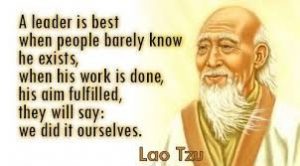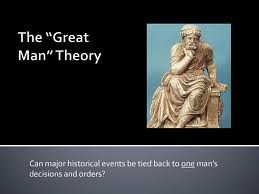The Lasting Leadership Theories
 Leadership is something that cannot be ignored in an organization, in government, in educational institutions, in hospitals, in police, in society and in army. Anywhere in world, even in animal kingdom it matters. Leadership is deeply ingrained in the human experience and therefore the study of leadership theory gives us a better understanding of the dynamics of leadership, which in turn makes it easier for us to be better leaders or team players. It’s a glaring fact that people don’t leave organizations, they leave their bosses. Friends, poor behaviors of people in command drive away talent which costs hugely to the organizations.
Leadership is something that cannot be ignored in an organization, in government, in educational institutions, in hospitals, in police, in society and in army. Anywhere in world, even in animal kingdom it matters. Leadership is deeply ingrained in the human experience and therefore the study of leadership theory gives us a better understanding of the dynamics of leadership, which in turn makes it easier for us to be better leaders or team players. It’s a glaring fact that people don’t leave organizations, they leave their bosses. Friends, poor behaviors of people in command drive away talent which costs hugely to the organizations.
 Leaders come in many shapes and sizes. They present many styles, many levels of experience and many levels of competencies. Some are great, while some are bland, while others are absolutely awful. The great leaders have taken us from a starting point to somewhere better. Some have leaded us through lapses in judgment and confidence; some have leaded us through the unknown to the known; some have supported us when we were having personal difficulties and turmoil. And, there are also those bland leaders who have done nothing, they were insipid and couched. We hardly remember what they did …
Leaders come in many shapes and sizes. They present many styles, many levels of experience and many levels of competencies. Some are great, while some are bland, while others are absolutely awful. The great leaders have taken us from a starting point to somewhere better. Some have leaded us through lapses in judgment and confidence; some have leaded us through the unknown to the known; some have supported us when we were having personal difficulties and turmoil. And, there are also those bland leaders who have done nothing, they were insipid and couched. We hardly remember what they did …
 Then there are those awful leaders who instead of giving us, taken away from us everything. They reduced our confidence, our abilities, our performance, our enjoyment everything. These worst leaders highlighted our little mistakes, they ridiculed us, and they are scoundrels. So please try to figure out what is your leadership style.
Then there are those awful leaders who instead of giving us, taken away from us everything. They reduced our confidence, our abilities, our performance, our enjoyment everything. These worst leaders highlighted our little mistakes, they ridiculed us, and they are scoundrels. So please try to figure out what is your leadership style.
Though theories seem like an alien concept sometimes, leadership theories cannot be ignored. It is a primal, natural part of human behavior therefore, it is given academic attention. The first step in the path to studying this field is the understanding of what the theory demand. It runs into the field of social science, psychology, part organizational theory, phylosphy and anthropology. It takes a little emotional awareness, and a little philosophical groundwork. I wish to quote here Chester Bernard’s definition in 1938; he says “Leadership is the ability of a superior to influence the behavior of subordinates and persuade them to follow a particular course of action”. I think this is an apt definition on leadership.
Nelson Mandela’s magnificent autobiographical bestseller, ‘’Long Walk to Freedom’’, is a best example of leadership communication. It’s not surprising, then, that such documents attract so much interest when they are made public. People are naturally curious to know about their leader’s personal life, their making, their philosophy etc. Unfortunately, they can occasionally be disappointed as demonstrated in Bill Clinton’s effusive and generally unrevealing autobiography, ‘My Life’ and that leaders are not free from weaknesses in Mahatma Gandhi’s biography ‘The story of my experiments with truth’. Let me tell you friends, people can see leadership; the good, the bad and the ugly; it is not difficult at all. Biographies transport us to other times and places, they teach us essential lessons, they inspire us and show us what we have in common with the center personality.
You ask anyone “what do effective leaders do?” and you’ll hear a sweep of answers. Leaders set strategy; they motivate; they create a mission; they build a culture. But how do they do that? The mystery of what leaders ought to do in order to spark the best performance from their people is their style of leadership. In recent years, you will so many leadership experts, trainers, institutes literally making business, all in pursuit of creating leaders. The world is hungry even today for genuine leaders. There is a dearth of them.
Some of the basic theories will explain all that you want to know about leadership.
 The Great Man Theory: During the 19th century, the Great Man Theory of Leadership was invented and it became very popular. The theory was formulated mainly by analyzing the behaviors of mainly military figures of the time. In the 1800s, authoritative positions were held solely by men and were typically passed on from father to son. Thus, it’s not a fluke that the theory was named “Great Man Theory.” The fact worth noting here is there weren’t any women who were given the chance to rise those days. The famous historian, Thomas Carlyle was deeply involved with this Great Man Theory of Leadership and had even stated that the history of this world was basically the combined biographies of these great men. Mr. Thomas Carlyle believed that effective leaders were a package of ‘Godly’ motivation and the right personality.
The Great Man Theory: During the 19th century, the Great Man Theory of Leadership was invented and it became very popular. The theory was formulated mainly by analyzing the behaviors of mainly military figures of the time. In the 1800s, authoritative positions were held solely by men and were typically passed on from father to son. Thus, it’s not a fluke that the theory was named “Great Man Theory.” The fact worth noting here is there weren’t any women who were given the chance to rise those days. The famous historian, Thomas Carlyle was deeply involved with this Great Man Theory of Leadership and had even stated that the history of this world was basically the combined biographies of these great men. Mr. Thomas Carlyle believed that effective leaders were a package of ‘Godly’ motivation and the right personality.
Early research on leadership was based on the study of people who were already great leaders. These people were often from the aristocracy, as few from lower classes had the opportunity to lead. This contributed to the notion that leadership had something to do with breeding. Around the mid 19th century, nobody could identify with any scientific certainty, which human characteristic or combination was responsible for identifying great leaders. The Great Man theory assumed that the traits of leadership were inherent. That simply meant that great leaders are born, they are not made. This theory saw great leaders as those who were destined by birth to become a leader. Furthermore, the belief was that great leaders will rise when confronted with the appropriate situation. But, in 1860, Herbert Spencer, an English philosopher disputed the great man theory by affirming that these heroes are simply the product of their times and their actions which results from social conditions. In other words, society was shaping these great men as oppose to them shaping society.
The Trait Leadership Theory: The trait model of leadership is based on the characteristics of many leaders; both successful and unsuccessful and is used to predict leadership efficiency. The resulting lists of traits are then compared to those of potential leaders to assess their probability of success or failure. The trait leadership theory believes that people are either born or are made with certain qualities that allow them to excel in leadership roles. Qualities such as intelligence, sincerity, hard work, responsibility, creativity and other values puts anyone in the shoes of a good leader. Francis Galton was influenced by Thomas Carlyle’s work. He took this idea further. Galton found that leadership was a unique property of extraordinary individuals, and suggested that the traits which leaders possessed were indisputable and could not be developed. Throughout the early 1900s, the study of leadership focused on leadership traits. The trait theory of leadership focused on analyzing mental, physical and social characteristic in order to gain more understanding of what is the characteristic or the combination of characteristics that are common among leaders. In the 1930s the field of Psychometrics was just introduced and it has gained a lot of popularity; personality traits measurement was not so reliable; study samples were of lower rank managers; explanations weren’t offered as to the relation between each characteristic and its impact on leadership. Many studies have analyzed the traits among existing leaders in the hope of uncovering those responsible for ones leadership abilities, but in vain, the only characteristics that were identified among these individuals were those that they were slightly taller and slightly more intelligent. Can you imagine? I wish to mention here that even today after almost two centuries this is one of the best topics for PhD dissertation.
 Behavioral theory of Leadership: It assumes that leaders can be made, rather than are born. And, that successful leadership is based in definable, learnable behavior. In reaction to the trait leadership theory, the behavioral theories are offering a new perspective, one that focuses on the behaviors of the leaders as opposed to their mental, physical or social characteristics. Thus, with the evolutions in psychometrics, notably the factor analysis, researchers were able to measure the cause and effects relationship of specific human behaviors from leaders. From this point forward anyone with the right conditioning could have access to the once before cream of the crop naturally gifted leaders. In other words, this theory is based on leaders are made not born. The behavioral theories first divided leaders in two categories. Those that were concerned with the tasks and those concerned with the people. Throughout the literature these are referred to as different names, but the essence are identical.
Behavioral theory of Leadership: It assumes that leaders can be made, rather than are born. And, that successful leadership is based in definable, learnable behavior. In reaction to the trait leadership theory, the behavioral theories are offering a new perspective, one that focuses on the behaviors of the leaders as opposed to their mental, physical or social characteristics. Thus, with the evolutions in psychometrics, notably the factor analysis, researchers were able to measure the cause and effects relationship of specific human behaviors from leaders. From this point forward anyone with the right conditioning could have access to the once before cream of the crop naturally gifted leaders. In other words, this theory is based on leaders are made not born. The behavioral theories first divided leaders in two categories. Those that were concerned with the tasks and those concerned with the people. Throughout the literature these are referred to as different names, but the essence are identical.
Behavioral theory is a big leap from Trait Theory, in that it assumes that leadership capability can be learned, rather than being inherent. This opens the floodgates to leadership development, as opposed to simple psychometric assessment that sorts those with leadership potential from those who will never have the chance. The behavioral theory is relatively easy to develop, as you simply assess both leadership success and the actions of leaders. With a large enough study, you can then correlate statistically significant behaviors with success. You can also identify behaviors which contribute to failure, thus adding a second layer of understanding.
 Contingency theory of Leadership: The Contingency Leadership theory argues that there is no single way of leading and that every leadership style should be based on certain situational parameter, which signifies that there are certain people who perform at the maximum level in certain places; but at minimal performance when taken out of their element. This theory also claims there is no best way to organize a corporation, to lead a company, or to make decisions. Instead, the optimal course of action is contingent (dependent) upon the internal and external situation. A contingent leader effectively applies his/her personal style of leadership to the situation. To a certain extent contingency leadership theory is an extension of the trait theory, in the sense that human traits are related to the situation in which the leaders exercise their leadership. It is generally accepted within the contingency theories that leader are more likely to express their leadership when they feel that their followers will be responsive.
Contingency theory of Leadership: The Contingency Leadership theory argues that there is no single way of leading and that every leadership style should be based on certain situational parameter, which signifies that there are certain people who perform at the maximum level in certain places; but at minimal performance when taken out of their element. This theory also claims there is no best way to organize a corporation, to lead a company, or to make decisions. Instead, the optimal course of action is contingent (dependent) upon the internal and external situation. A contingent leader effectively applies his/her personal style of leadership to the situation. To a certain extent contingency leadership theory is an extension of the trait theory, in the sense that human traits are related to the situation in which the leaders exercise their leadership. It is generally accepted within the contingency theories that leader are more likely to express their leadership when they feel that their followers will be responsive.












































